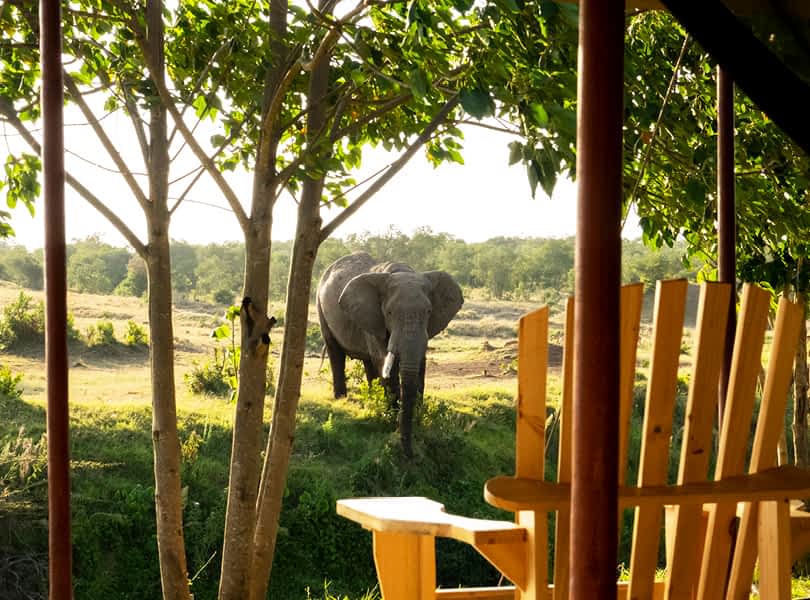Landing at the remote airstrip, the scenery was instantly captivating. Even though it was only a 25-minute flight from Lewa—our last safari stop—the contrast in landscapes was dramatically different. The two destinations complement each other beautifully and are well worth pairing on a single itinerary.
I was greeted by my guide, Robert, a member of the local Samburu community, who drove me to Sarara Camp with a scenic game drive along the way. As we passed through the lush, green landscape, we saw Samburu herders in their bold, colorful attire, walking with their livestock. Their traditional clothing stood out vibrantly against the green backdrop.
Sarara Camp is perched on elevated ground with spectacular views across Namunyak’s 850,000-acre wilderness and the Mathews Range. The open-air lounge is both inviting and expansive, with soft sofas and armchairs set around coffee tables—ideal for relaxing. Just beyond it is a naturally formed swimming pool, and unlike most safari camps, the water was perfectly warm. Below the pool lies a waterhole, regularly visited by elephants and other wildlife. Staff are always nearby to bring drinks as you soak in the surroundings.
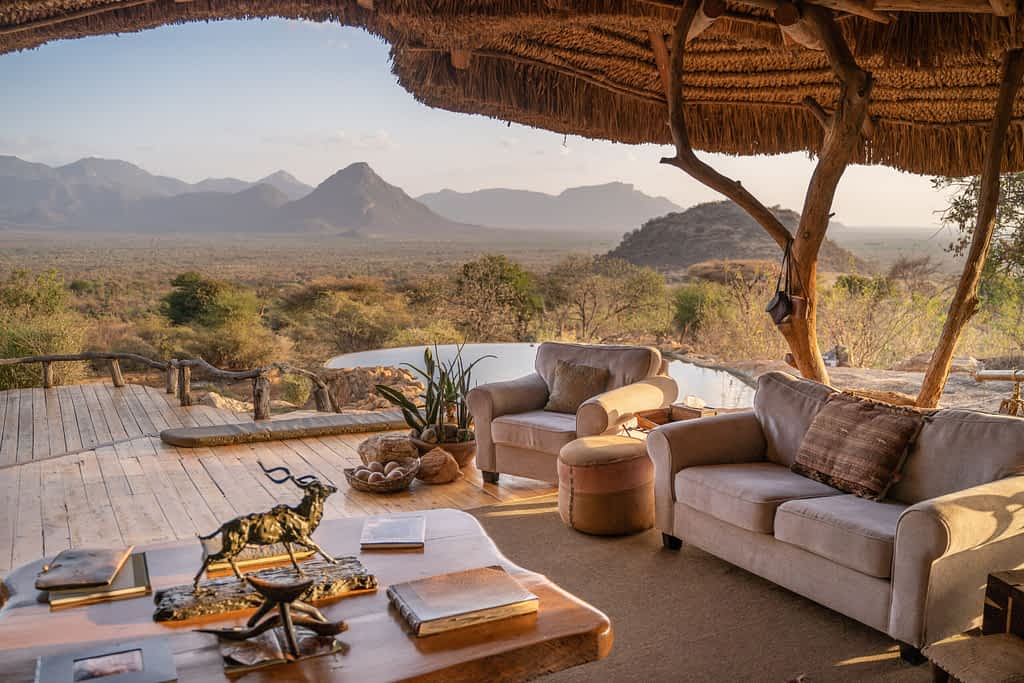
With just six beautifully designed en-suite tents, each room provides complete privacy and unobstructed views. My tent and private deck looked out over untouched wilderness—so stunning, I would love it to be a mural on my living room wall. This eco-lodge is completely off-grid, powered 24/7 by solar energy and Tesla battery systems, and designed with sustainability at its core.
While this region may not offer the dense wildlife concentrations of more famous parks, Sarara shines in its rare species. We spotted reticulated giraffes and the elegant Gerenuk, a long-necked antelope found only in select parts of East Africa.
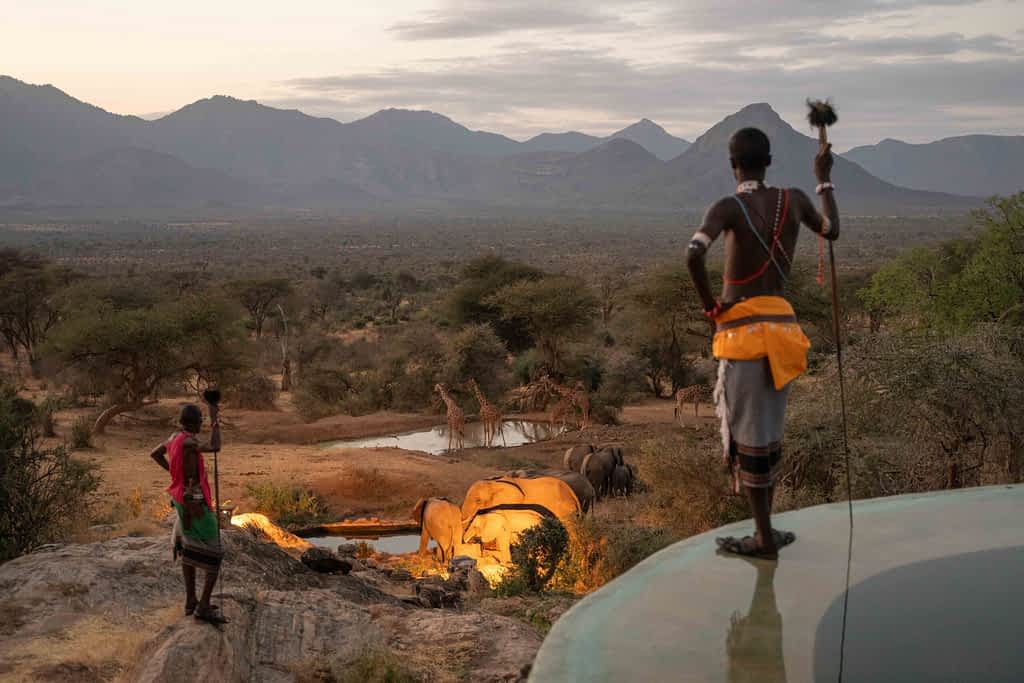
The safari vehicles also have rooftop seats, offering a more elevated and immersive view of the landscape—something you rarely see elsewhere. It’s an exhilarating way to connect with the land.
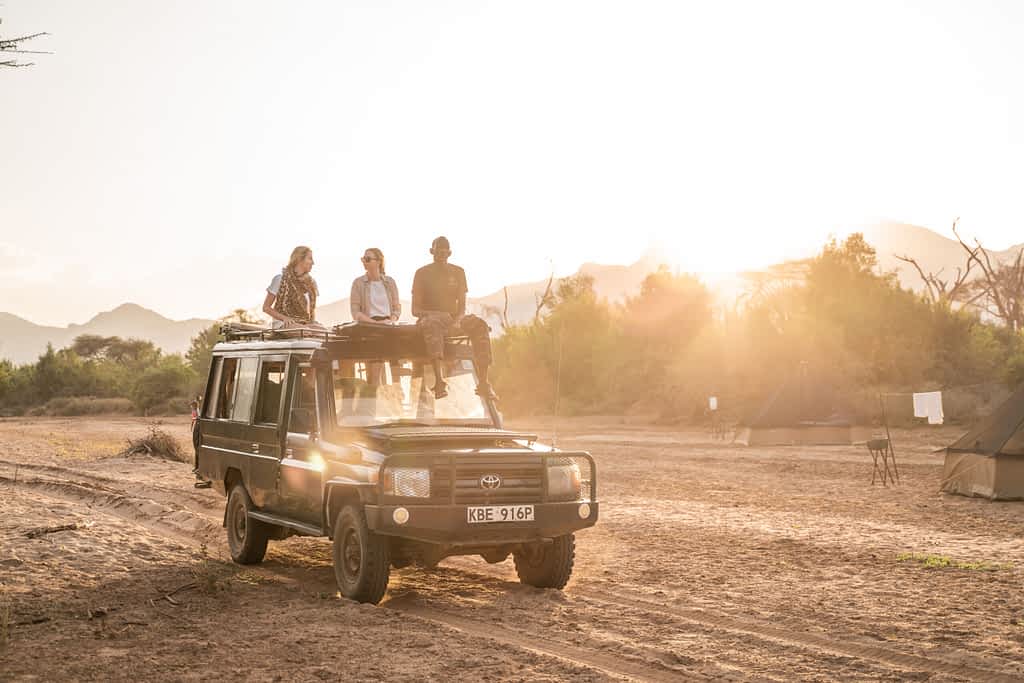
Beyond game drives and lounging poolside, Sarara offers activities that create a real connection with both the environment and its people. I went on hikes with Samburu guides, enjoyed a massage with mountain views, and learned about Samburu traditions from Michael, who’s also a mountain beekeeper. He could even identify the flower source of different types of honey, and shared a story of once encountering a lion on foot.
Artisans from the local community visited the camp—Samburu women offered handcrafted beadwork (I left with a custom ankle bracelet), and a local blacksmith engraved a bracelet for me using ancient techniques over an open flame.
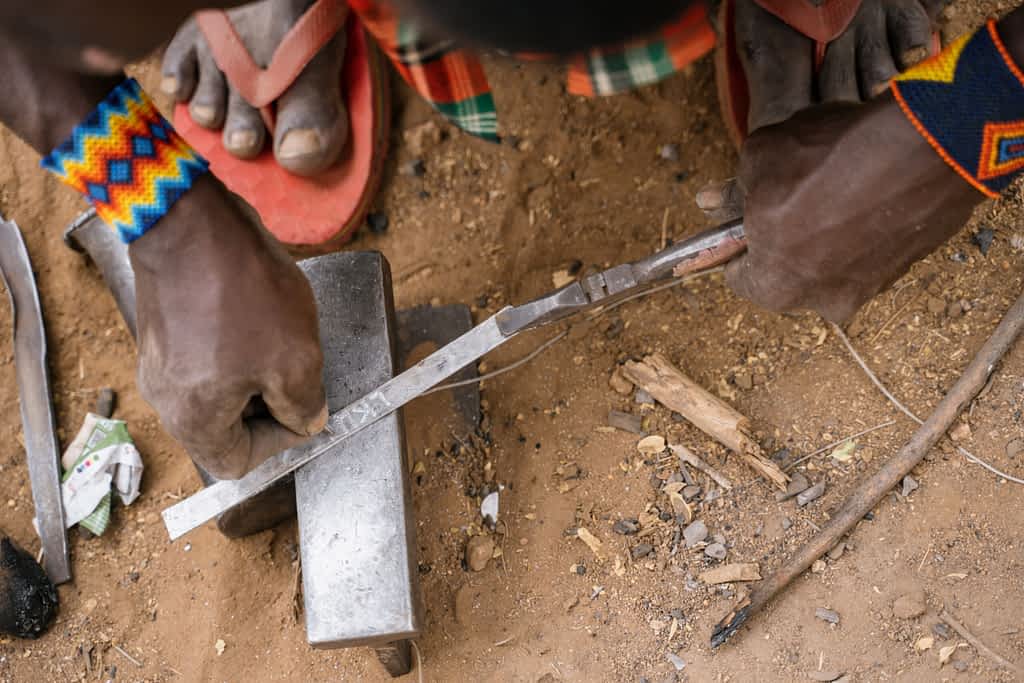
We also visited a remote Samburu village. No one was called in advance, and no photos were allowed. It felt real—quietly powerful in its authenticity. While the Maasai may be better known, I found the Samburu have preserved their culture with remarkable integrity. Since most of Sarara’s staff are Samburu, every conversation added layers of understanding.
There is also Horseback riding for experienced riders. During the dry season, you might witness the Samburu’s singing wells, one of their most important and powerful traditions, and Sundowners are magical here—watching the sun set against the mountains is an experience I’ll never forget.
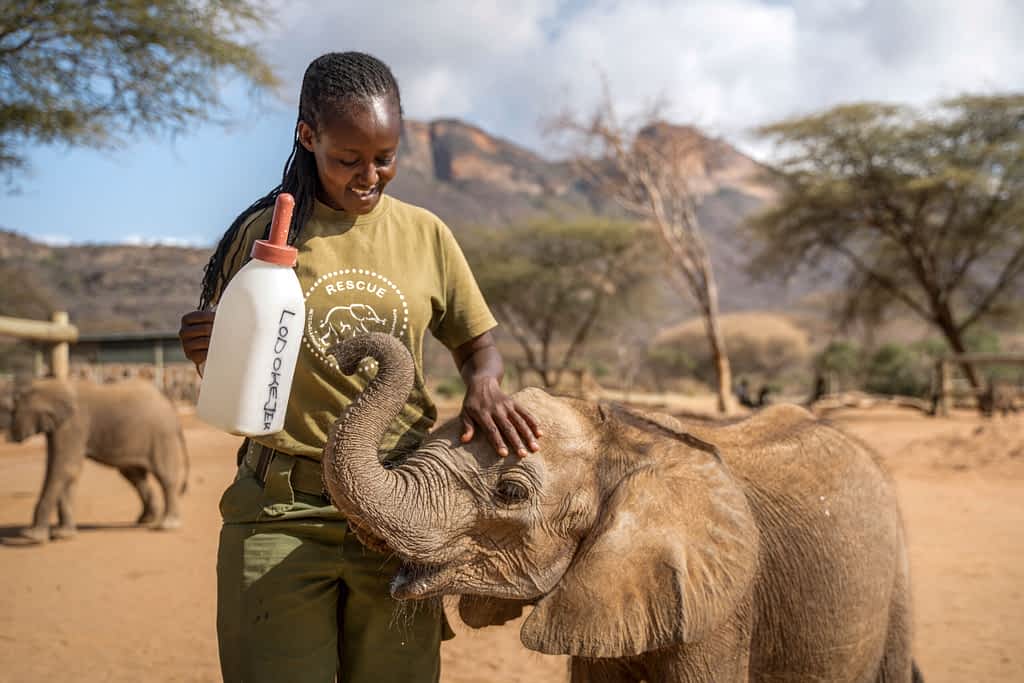
Reteti Elephant Sanctuary
Just a 45-minute drive from Sarara lies Reteti Elephant Sanctuary. I had visited before, and returning was even more rewarding. As Sarara guests, we were given private access, allowing us more time with the elephants and their keepers.
One of the highlights of our visit—aside from getting up close to the elephants—was a conversation with Naomi Leshongoro, the first woman from the Samburu community to be hired as an elephant keeper at Reteti.
Listening to her journey was deeply moving. She shared that she was initially afraid to work with elephants, but over time, that fear transformed into deep affection and purpose.
Today, 12 women are part of the keeper team, proving that conservation at Reteti is not just about protecting wildlife—it’s also about empowering people.
Naomi’s warmth, courage, and dedication reflect the heart of what makes Reteti so special. It’s not just a place to see elephants—it’s a place to witness real change, led by the people who call this land home.
We’re excited to share an upcoming podcast episode featuring a conversation with Russia, one of Reteti’s dedicated elephant keepers—and a proud member of the Samburu community. Get a behind-the-scenes look at life at the sanctuary, and the stories that keep this place so full of heart




